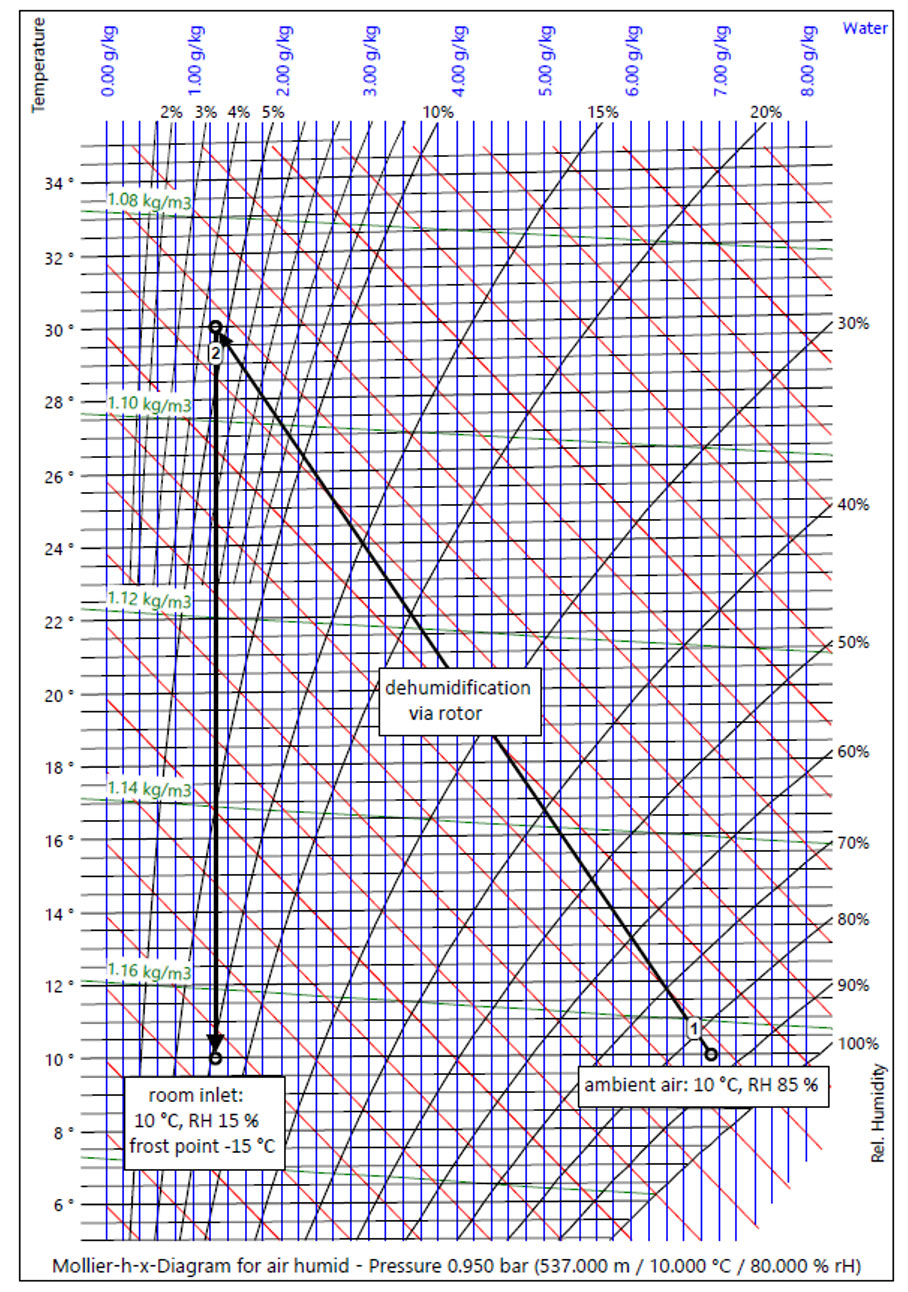Dehumidification of air is possible after the condensation priciple or the sorption priciple.
Sorption is a generic term for operations that lead to enrichment of a substance within a phase or at an interface between two phases. The enrichment within a phase is more specifically called absorption; enrichment at an interface is called adsorption. In 1909 J.W. McBain 1909 coined the term “sorption” for processes which can not be clearly distinguished in adsorption and absorption. The absorbing material called sorbent. (From Wikipedia, abridged)
Condensation
Air flows over a cold surface for dehumidification. The dew point reached corresponds to the temperature to which the air can be cooled. In order to avoid icing on the surface of the cooler this principle is limited to dew points ≥ +10 ° C.
Example for condensing dehumidification: supply air dehumidification





